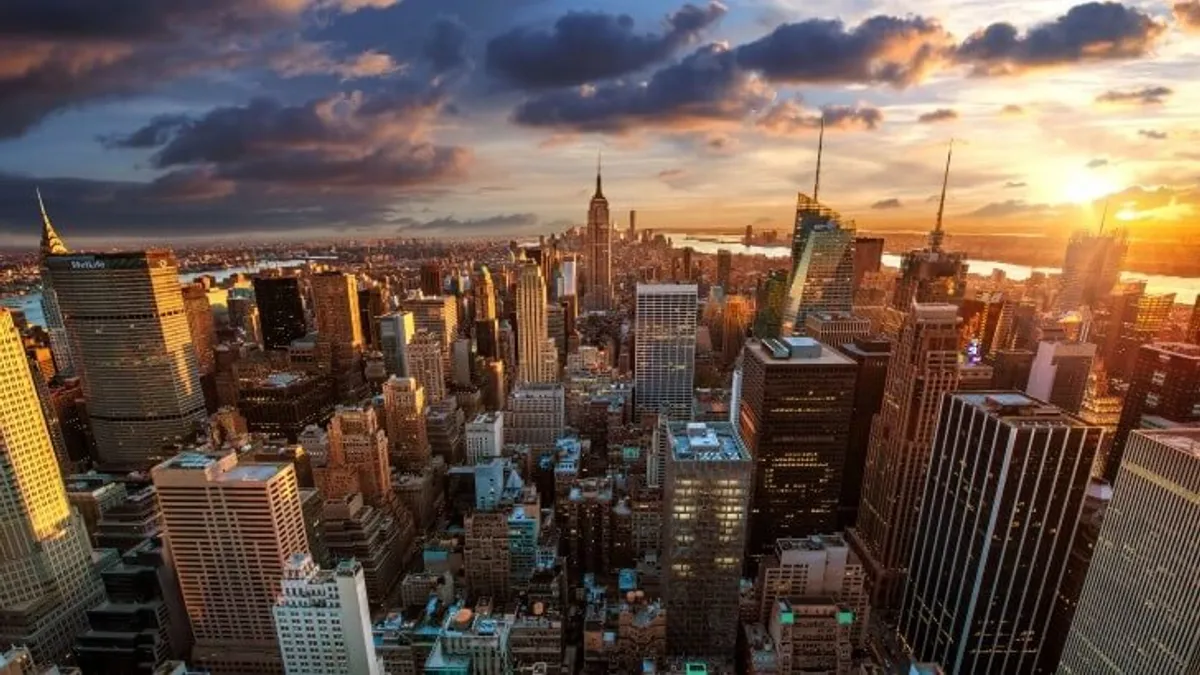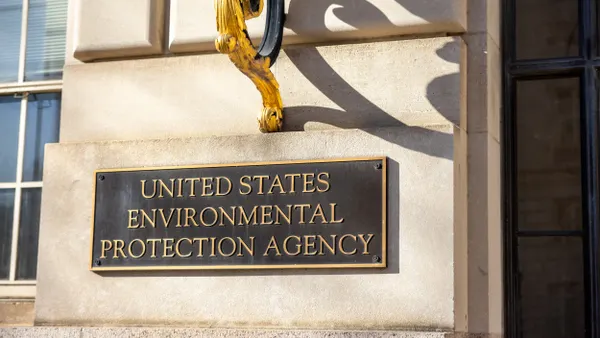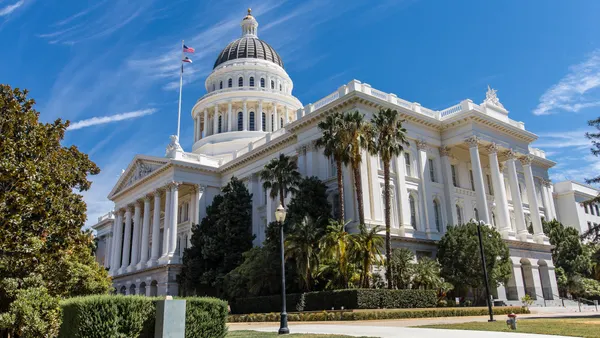Dive Brief:
- Many U.S. cities are "ramping up their efforts" to achieve a clean energy future, according to the 2020 City Clean Energy Scorecard released Tuesday by the American Council for an Energy-Efficient Economy (ACEEE). The annual report analyzed 100 large cities to find more than 160 local clean energy actions — new efforts or expansions of previous initiatives — were taken from April 2019 to May 2020.
- New York City topped this year's scorecard, followed by Boston and Seattle tied for second, and Minneapolis and San Francisco tied for fourth. New York hadn't even placed in the scorecard's top five cities last year, but its recently adopted Climate Mobilization Act pushed the city into the No. 1 spot, said David Ribeiro, lead report author and director of ACEEE's local policy program.
- The scorecard also found that only 63 of the 100 cities analyzed have communitywide greenhouse gas (GHG) reduction goals, and only 34 of those cities have data available to track progress. Twenty of those 34 cities are on track to reach their targets, indicating "there's still a lot of work that has to be done," Ribeiro said.
Dive Insight:
This annual report from ACEEE scores local-level energy efficiency efforts on a 100-point scale, divided into five categories: building policies and transportation policies (30 points each), energy & water utilities and communitywide initiatives (15 points each) and local government operations (10 points). Ribeiro noted the effects of the COVID-19 pandemic were not weighed in the 2020 ranking due to the timing of data collection, though he said next year's scorecard will likely pick up on those impacts.
This year's top 10 ranking closely mirrors that of the 2019 edition, with the exception of California newcomers San Jose and Oakland bumping out Austin, TX and Portland, OR, respectively. ACEEE says there's a big gap between the energy efficiency work being done in these leading cities and the efforts among cities at the bottom of the list. "That's a gap that we haven't really seen closing year over year," Ribeiro said.
Comparison of the top 10 cities is as follows:
| City | 2020 ranking | 2019 ranking |
| New York | 1 | 6 |
| Boston | 2 | 1 |
| Seattle | 2 | 3 |
| Minneapolis | 4 | 4 |
| San Francisco | 4 | 2 |
| Washington, DC | 6 | 5 |
| Denver | 7 | 8 |
| Los Angeles | 8 | 7 |
| San Jose, CA | 9 | 11 |
| Oakland, CA | 10 | 12 |
| Austin, TX | 11 | 9 |
| Portland, OR | 12 | 10 |
There's no silver bullet to getting all cities up-to-speed on the implementation of clean energy actions, Ribeiro said, noting that "every city has to come up with its own path in terms of how it's going to achieve its goals." That path must begin with foundational measures, he said, but can continue to evolve and expand as targets are achieved.
New York is one city that went beyond the basics to expand its energy efficiency efforts. The April 2019 introduction of its Climate Mobilization Act, which officials declared at the time as "the most energy efficient legislation in the country," helped the city "leapfrog" its way to the top of the 2020 scorecard, Ribeiro said, despite already being a leader in energy efficiency. That legislation centers on a requirement for buildings over 25,000-square-feet to cut climate emissions 40% by 2030.
Such building performance standards are an "innovative policy tool that many cities aren't considering and should be looking at," Ribeiro said. Washington, DC, New York and St. Louis are the only U.S. cities to implement such building standards for large buildings.
In fact, St. Louis' adoption of its Building Energy Performance Standard positioned it as one of two "most-improved cities" in this year's scorecard, boosting it to the 28th spot in the ranking (up from 36th). St. Paul, MN also received the "most-improved" honor, climbing to the 16th spot in the ranking (up from 31st) due its adoption of a building benchmarking ordinance; supported development of community solar; a resolution to support utility-scale renewable energy and storage, and other major policy improvements, ACEEE reports.
Due to methodology changes between 2017 and 2019, last year's scorecard substituted its "most-improved" rankings with a "cities to watch" section, highlighting clean energy progress in Cincinnati, OH; Hartford, CT and Providence, RI. While the 2020 scorecard does not name "cities to watch," Ribeiro said all three of those cities are still doing significant energy efficiency work, with Providence serving as a model in how to prioritize equity in the sustainability policymaking process.
For local governments to truly drive a national movement around clean energy and climate action, "there needs to be a little more action in some of those lower-ranking cities," Ribeiro said. There are foundational policies those cities can consider, such as the adoption of GHG reduction targets, increased community engagement in clean energy planning and implementation, and adoption of energy-saving programs across government operations to "lead by example," the report reads.
Meanwhile, ACEEE suggests the cities that continue to lead in the ranking should keep pushing on cutting-edge, equitable policies, particularly in the building and transportation sectors.
"All cities, even those ranked in the top tier, have considerable opportunity to improve," the report authors wrote.











